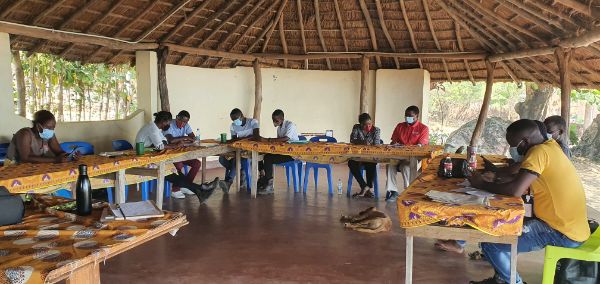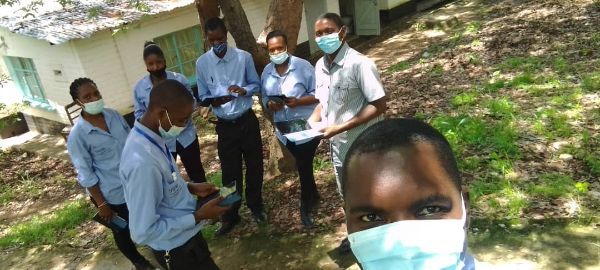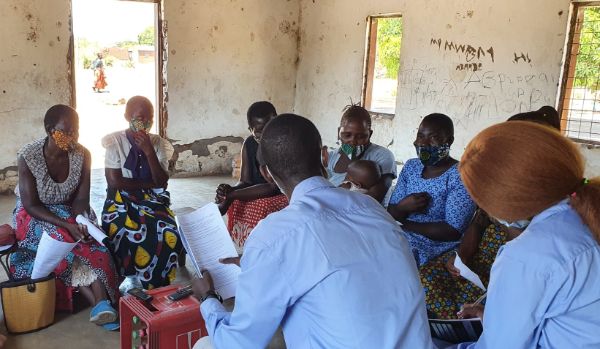Karonga, Malawi
Our project partner in Malawi is MEIRU (the Malawi Epidemiology and Intervention Research Unit), which has been collecting epidemiological and demographic data in their northern, rural, site in Karonga District since 1979; and established an urban site in Lilongwe in 2012. MEIRU, formerly known as Karonga Prevention Study, has over the last 30 years made major contributions to the understanding and control of mycobacterial disease, HIV and other infectious diseases. It involves a partnership between the Malawi College of Medicine, the London School of Hygiene and Tropical Medicine, and the Malawi Ministry of Health. We worked with MEIRU’s Director Mia Crampin, epidemiologist Abena Amoah, demographer Albert Dube, nutritionist Shekinah Munthali, data scientist Estelle McLean, field supervisor Lusako Mwalwanda, and other staff in MEIRU’s northern site in Karonga District. See here for more information on the Karonga cohort.
Our data collection in Karonga District, Malawi
We started data collection in Malawi in November 2021 when researcher Anushé Hassan arrived at the Malawi Epidemiology and Intervention Research Unit (MEIRU) in Chilumba village in northern Malawi. Anushé first worked with MEIRU researchers Shekinah Munthali, Albert Dube, Abena Amoah and Estelle McLean to finalise the sampling frame from which households would be selected within the HDSS catchment area. Anushé then led a week-long training session for the Field Supervisor and Interviewers who were hired by MEIRU for this project. Lusako Mwalwanda was the Field Supervisor in Malawi, and the Interviewers were Linda Chirambo, Andy Chisunda, Kelvin Gondwe, Eliezer Harawa, Hiswill Harawa, Trizah Kabaghe, Glory Mawelera and Aveck Nyondo.


Interviewer training at MEIRU led by Anushé Hassan, with support from Albert Dube and Shekinah Munthali
Kelvin Gondwe, Eliezer Harawa, Hiswill Harawa, Linda Chirambo, Glory Mawelera, Trizah Kabaghe, Albert Dube
Pilot focus groups and questionnaires: Informing the final survey
To ensure that the questions we were asking in both the focus group discussions and questionnaires was locally relevant, we first undertook pilot focus groups as well as tested our questionnaires among a small proportion of the sampling frame.
The purpose of the pilot focus group discussions was to understand local ideas about social support, care provided to children, and the influence of religious practice on cooperative behaviour in the community. We held six pilot focus group discussions with three religious denominations in the area, one each for men and women per denomination. Each focus group included between 8 and 10 participants. The ethnographic information that emerged from these focus group discussions was used to update our pilot questionnaires as well as inform the qualitative element of our project (i.e., focus group discussions that took place in May 2022).


Participants from a focus group discussion led by Eliezer Harawa and Glory Mawelera
Survey
Survey data were collected verbally in the local Tumbuka language. Interviews took between 1.5 – 2 hours. Data were entered into tablets during the interview using a software called ODK Collect so that afterwards data were easily transferred to our central data base. The interviewers also collected anthropometric data for each person being interviewed as well as for focal children. Specifically, we collected height, weight, blood pressure, and the circumference of the upper arm. Our team interviewed 750 women and collected detailed information for 1481 children from 17 different reporting groups within the Karonga HDSS catchment area.
A day in the field for Eliezer Harawa as interviewer
Usually, my day would start with reporting for duties at the office at 07:30 am. There I would meet the field supervisor (Lusako Mwalwanda) and fellow interviewers to start arrangements for field work; pick up booked households which most of the times were booked a day or two before the actual day of interviews, pack all necessary equipment for anthropometry and the tablet with an electronic questionnaire. The trip to the field would usually be on an assigned motorbike for each interviewer. After arrival to a specific household and confirmation of the study participants, the interview would commence. Lunch break would be at 12:00 pm, each interviewer would go to their preferred place to have their lunch and continue with interviews at 01:00 pm. Mainly, interviews would end at 03:30 pm or 04:00 pm to start off for the office. The day would end with handing over the field logs to the supervisor for daily records and return all equipment – ready for tomorrow!


In the photo on the left, a participant’s height is being measured by interviewer Trizah Kabaghe. The second photo shows a participant’s blood pressure being measured.
What happens next?
We have finished data collection in Malawi and are currently analysing the data. In 2024, we plan to present results to the communities that participated in the study and receive feedback from the community members.
